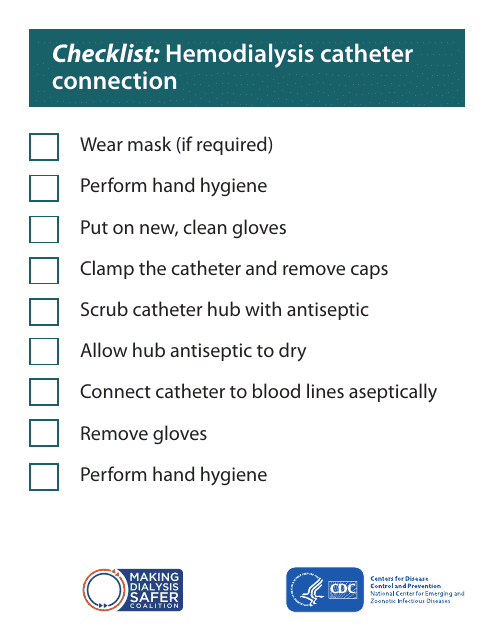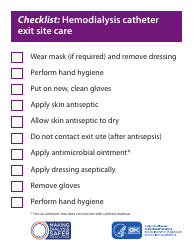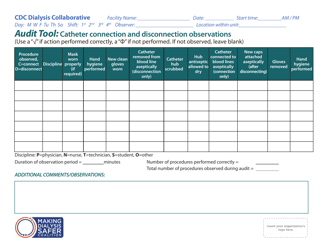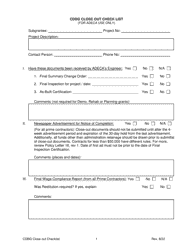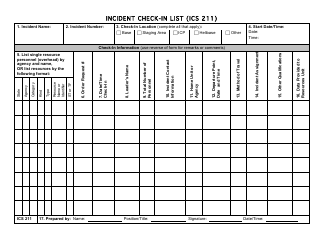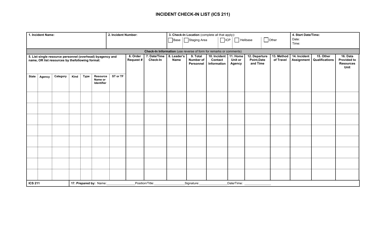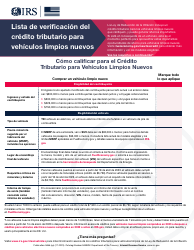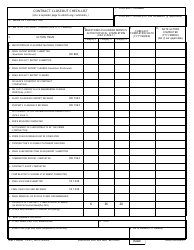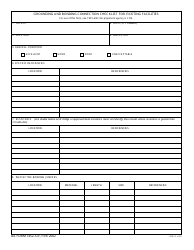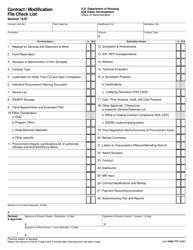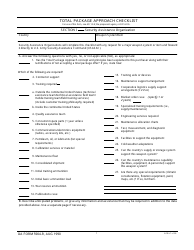Checklist: Hemodialysis Catheter Connection
Checklist: Hemodialysis Catheter Connection is a 1-page legal document that was released by the U.S. Department of Health and Human Services - Centers for Disease Control and Prevention and used nation-wide.
FAQ
Q: How do I prepare for hemodialysis catheter connection?
A: Make sure hands are thoroughly cleaned and gloves are worn before connecting the catheter.
Q: What supplies do I need for hemodialysis catheter connection?
A: You will need an antiseptic solution, sterile gloves, sterile dressings, and catheter connection caps.
Q: How should I clean the catheter connections?
A: Use an antiseptic solution, such as chlorhexidine, to clean the connection site thoroughly.
Q: How do I connect the catheter to the hemodialysis machine?
A: Follow the instructions provided by your healthcare provider or dialysis nurse for properly connecting the catheter to the machine.
Q: How often should the catheter connections be changed?
A: Catheter connections should be changed as per the recommendation of your healthcare provider or dialysis nurse. Generally, they are changed every 1-2 weeks or as needed.
Q: What should I do if I notice any signs of infection at the catheter connection site?
A: Contact your healthcare provider immediately if you notice any signs of infection, such as redness, swelling, discharge, or pain at the catheter connection site.
Q: Can I shower with the catheter connections in place?
A: It is generally recommended to avoid getting the catheter connections wet. Consult with your healthcare provider or dialysis nurse for specific instructions regarding showering with the catheter in place.
Q: How should I care for the catheter connections at home?
A: Proper care includes keeping the connections clean, dry, and covered with sterile dressings. Follow the instructions provided by your healthcare provider or dialysis nurse for at-home care.
Q: Is it normal to have some blood at the catheter connections after hemodialysis?
A: It is not uncommon to have some blood at the catheter connections after hemodialysis. However, if you notice excessive bleeding or have concerns, contact your healthcare provider or dialysis nurse.
Q: Can I disconnect the catheter connections by myself?
A: Catheter connections should only be disconnected by healthcare professionals to minimize the risk of infection. Do not attempt to disconnect the connections on your own.
Form Details:
- The latest edition currently provided by the U.S. Department of Health and Human Services - Centers for Disease Control and Prevention;
- Ready to use and print;
- Easy to customize;
- Compatible with most PDF-viewing applications;
- Fill out the form in our online filing application.
Download a printable version of the form by clicking the link below or browse more legal forms and templates provided by the issuing department.
